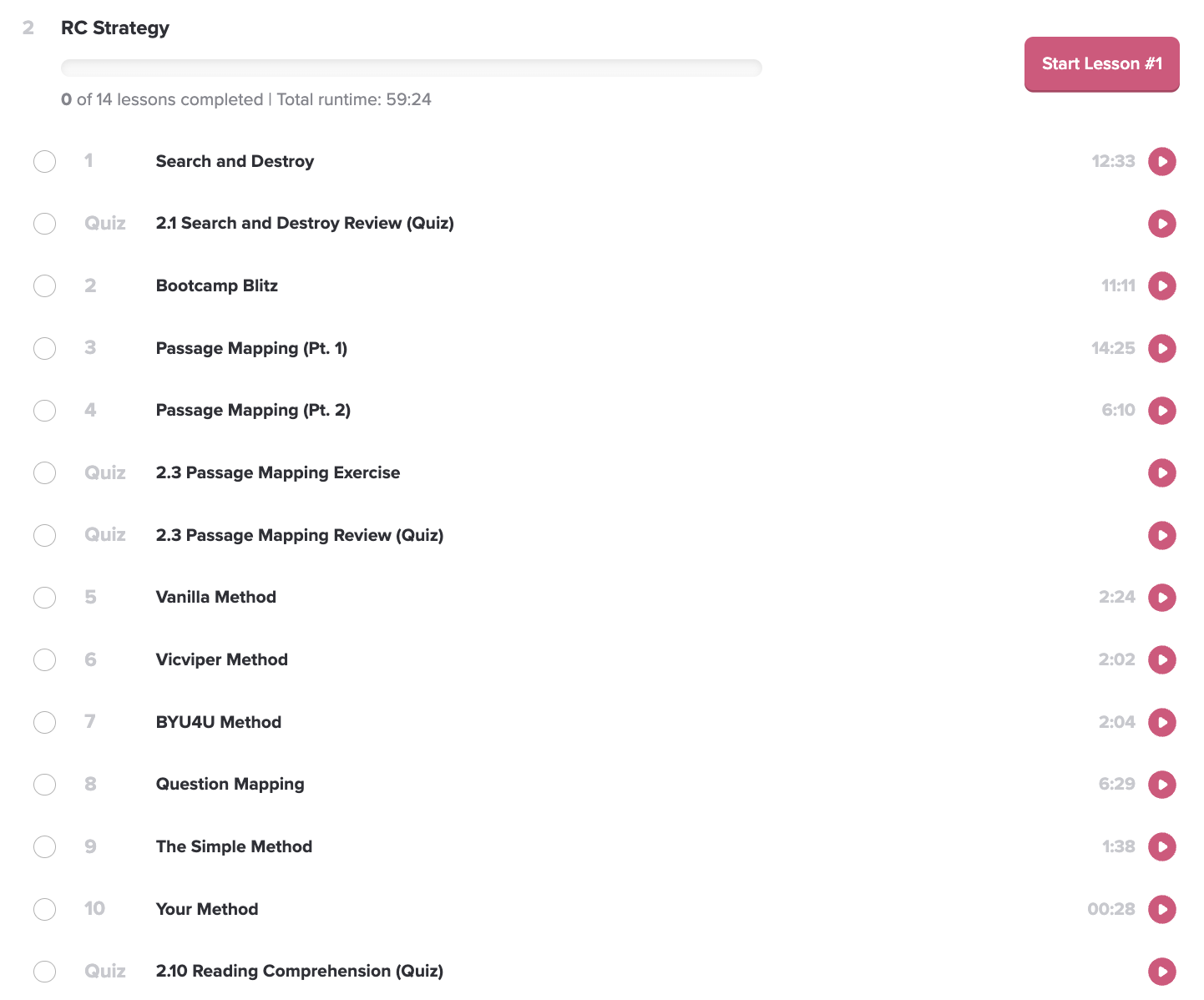What is Search & Destroy?
Search and Destroy (or S&D) is a method used on the reading comprehension section of the DAT. In brief, the method is to skip reading the passage and to just go straight to the questions. If the question is application-based, inference-based, or tone-based, you mark and skip it. If the question is detail-based, which is the majority of the questions on the DAT, you quickly skim the passage and look for where the answer lies. Once you identify the part of the passage that answers the question, you read that specific area of the passage and answer the question. After you answer all of the detail-based questions, go back and answer the inference/tone questions you previously skipped.
How do I use Search & Destroy?
When you start the reading comprehension test, do not read the passage and instead look at the first question to determine if it is a detail-based question (definitions, dates, descriptions, reasons, motives, causes, etc.), or an inference/tone question (what is the tone, statement is true but reason is incorrect, what would happen if…, etc.). If it is the latter, skip it and come back after you answer all of the detail-based questions. The reason is that you’ll eventually have read the entire passage in pieces after answering the detail-based questions, giving you enough information to answer the inference/tone questions.
Once you determine it is a detail-based question, look for certain keywords in the question. Names of places, people, and things are good places to start. You want to identify keywords that are unique and not common. For example, read the following question on one of our DAT reading comprehension practice tests:
- 4. How long can the influenza virus remain infectious on nonporous dry surfaces?
A. 24 hours
B. 48 hours
C. 72 hours
D. 96 hours
E. less than 24 hours
The keyword I would pickup from this question is “nonporous dry surfaces”. I wouldn’t choose “influenza virus” because that is what the entire passage is about – nearly every paragraph mentions influenza.
Now with the keyword in mind, quickly scan the passage paragraph by paragraph looking for that keyword. In this example, I found the keyword appears in the 9th paragraph, reprinted below:
“(9). In natural infections, the postulated modes of transmission have included aerosols, large droplets, and direct contact with secretions or fomites because the virus can remain infectious on nonporous dry surfaces for nearly two days. Because in practice completely ruling out contributions of a given mode of transmission is often difficult, the relative contribution of each mode is usually difficult to establish by epidemiological studies alone.”
In this specific example, the answer choices are given in hours! We have to convert “two days” into 48 hours, a common twist on the DAT. Usually the correct answer will not be directly lifted from the passage, but rather slightly reworded (and thus requiring some comprehension).
Key Tip to Follow
Sometimes, the DAT will attempt to trick you by placing the keyword in multiple places in the passage. Be sure you read a few sentences before the keyword and a few sentences after to see if all of the information matches the answer choice. Often times, the DAT will use surrounding information around the keyword to create distractor answer choices, hoping you’ll choose it just because it seems familiar. You can avoid these pitfalls by thoroughly reading the information and determining whether or not the information adequately answers the question. You still have to comprehend the information and not just choose familiar looking phrases.
Remember, if you are having trouble finding the answer to a question, simply guess, mark it, and move on. You cannot waste too much time on a single question on the DAT.
Conclusion
This is a strategy that many students have found success with on the DAT. If you’re more of a visual learner, Joel breaks this strategy down in RC Academy. You can find this video here: https://app.bootcamp.com/dat/reading-comprehension/videos/rc-strategy?index=1
However, it all depends on your style and what works best for you. I personally didn’t like using this method because it put too much pressure on me, and I often ended up doing worse. Try it out and see if you can incorporate it into your strategy to beat the DAT reading comprehension section. Joel breaks down the other strategies (found in the image below) in the RC strategy section: https://app.bootcamp.com/dat/reading-comprehension/videos

Get everything you need in one place. Start studying today for free.







.jpg)









